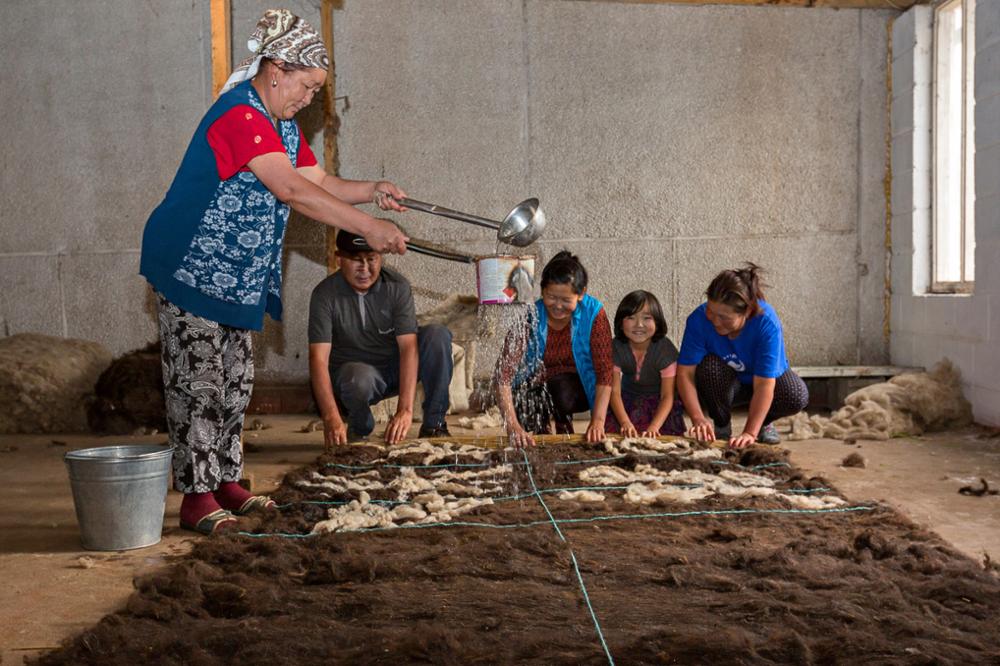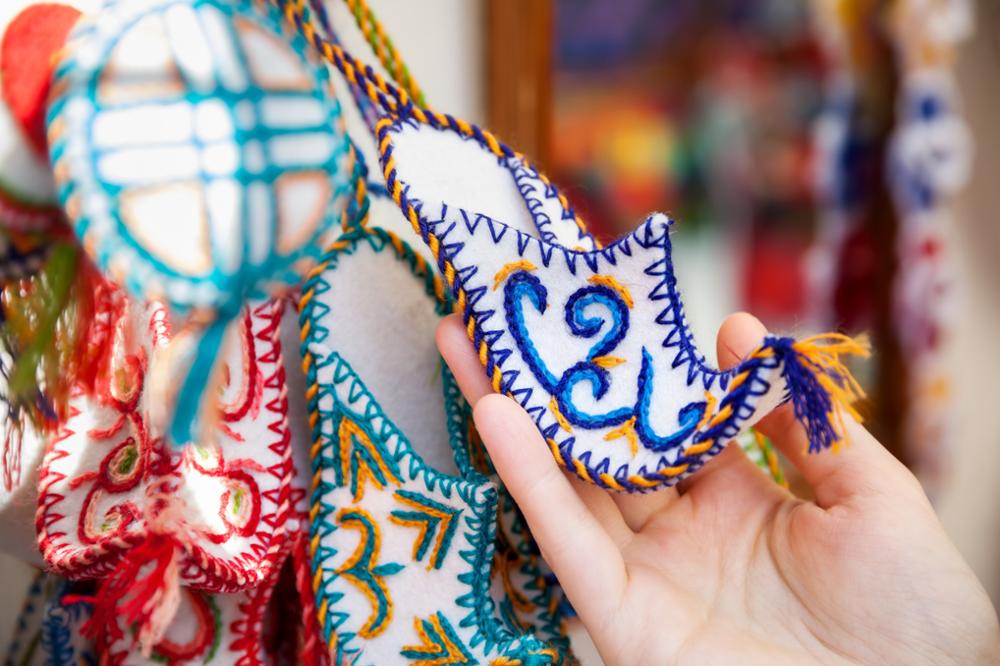Kyrgyzstan
Kyrgyzstan, kingdom of felt
Local arts and crafts in Kyrgyzstan are mostly made from felt. Felt has always been an important part of Kyrgyz peoples’ lives, and mostly of the nomadic life; today, felt is still used for its useful properties, but also modernized into creative modern art pieces.
A know-how passed from generation to generation
During your trip in Kyrgyzstan, stop by Kochkor or Bokonbayevo to visit a traditional felt fabric. You’ll be able to buy nice handmade souvenirs and, more importantly, to learn how to make a felt rug.
Kyrgyz people have always mastered the art of felt, which was passed from one generation to the other, from mother to daughter. It was an essential skill to know for nomadic women: for centuries, felt has been used in Kyrgyzstan to make yurts, clothing and many other household and everyday objects.

Felt is made from a mix of sheep wool. Sheep are shaved twice a year, and their wool is different in the autumn and in the fall, which is why it’s important to mix it. First, women beat the cleaned wool to mix it and lighten it. Then, they put several layers of wool on a straw mat. The number of layers used depends on the object they will make: of course, to make the walls of yurts, they will use the thickest felt. Once the felt is ready, they roll up the straw map, pour on it boiling water and flatten the felt by dancing (or stepping) on the rolled-up mat. The felt carpet should then be wrung out and washed with soap.
This handwork is very difficult and requires strength and a lot of hands, depending on the size of the felt created. As traditions are dying off, felt crafts still hold an important place in the life of modern Kyrgyz.
The traditional Kyrgyz rug, “shyrdak”
The shyrdak is one of the most well-known felt objects made in Kyrgyzstan. This traditional carpet is found in every Kyrgyz house. Handed down from one generation to the other, it’s considered an essential part of family life. During a wedding, the shyrdak is given by the girl’s parents as part of the dowry. Handmade by the bride’s mother, it is believed to promise happiness for the young couple. Until recently, every Kyrgyz woman knew how to make a shyrdak, since their daughters wouldn’t be able to get married otherwise!
Shyrdaks are made with two differently colored layers of felt, in which women carve traditional motives. We can see symbols that represent the beginning of manhood, families, yurts, Marco Polos… Every color also has a signification. For example, yellow symbolizes joy and red means a long life.
Making a shyrdak is a very long, thorough and symbolic work. Through the shyrdak, the mother represents her wishes for the new family.

Modernized felt
Felt has always been an important life of the Kyrgyz people. Because it is resistant and insulating, it was used to make yurts, the nomads’ homes, as well as all of their clothes. The national hat, Kalpak, now registered as cultural heritage of the UNESCO, is also made from felt.
Lately, Kyrgyz artists have revisited felt arts and crafts and modernized their creations. You can now find modern rugs, clothes and Kalpaks made of felt, as well as new objects like paintings or souvenirs. This new fashion has been showcased at international shows and leads to believe that tradition is becoming Kyrgyzstan’s future!

